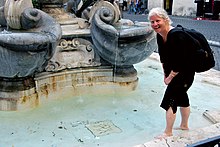
The Talmud is,after the Hebrew Bible,the central text of Rabbinic Judaism and the primary source of Jewish religious law (halakha) and Jewish theology. Until the advent of modernity,in nearly all Jewish communities,the Talmud was the centerpiece of Jewish cultural life and was foundational to "all Jewish thought and aspirations",serving also as "the guide for the daily life" of Jews.

The Tosefta is a compilation of Jewish Oral Law from the late second century,the period of the Mishnah and the Jewish sages known as the Tannaim.

Rabbinic literature,in its broadest sense,is the entire spectrum of works authored by rabbis throughout Jewish history. The term typically refers to literature from the Talmudic era,as opposed to medieval and modern rabbinic writings. It aligns with the Hebrew term Sifrut Chazal,which translates to “literature [of our] sages”and generally pertains only to the sages (Chazal) from the Talmudic period. This more specific sense of "Rabbinic literature"—referring to the Talmud,Midrashim,and related writings,but hardly ever to later texts—is how the term is generally intended when used in contemporary academic writing. The terms mefareshim and parshanim almost always refer to later,post-Talmudic writers of rabbinic glosses on Biblical and Talmudic texts.
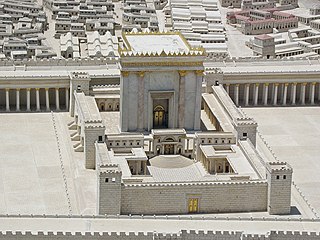
The Second Temple was the reconstructed Temple in Jerusalem,in use between c. 516 BCE and its destruction in 70 CE. In its last phase it was enhanced by Herod the Great,the result being later called Herod's Temple. Defining the Second Temple period,it stood as a pivotal symbol of Jewish identity and was central to Second Temple Judaism;it was the chief place of worship,ritual sacrifice (korban),and communal gathering for Jews. As such,it attracted Jewish pilgrims from distant lands during the Three Pilgrimage Festivals:Passover,Shavuot,and Sukkot.

Torah study is the study of the Torah,Hebrew Bible,Talmud,responsa,rabbinic literature,and similar works,all of which are Judaism's religious texts. According to Rabbinic Judaism,the study is done for the purpose of the mitzvah ("commandment") of Torah study itself.
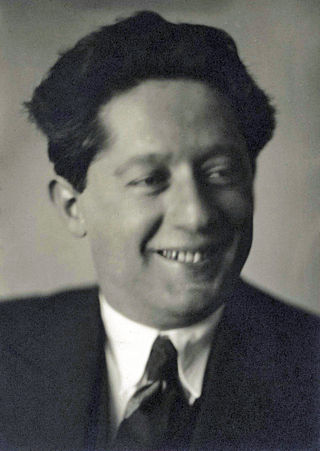
Saul Lieberman,also known as Rabbi Shaul Lieberman or,among some of his students,the Gra"sh,was a rabbi and a Talmudic scholar. He served as Professor of Talmud at the Jewish Theological Seminary of America (JTSA) for over 40 years,and for many years was dean of the Harry Fischel Institute in Israel and also president of the American Academy for Jewish Research.
Tannaim were the rabbinic sages whose views are recorded in the Mishnah,from approximately 10–220 CE. The period of the Tannaim,also referred to as the Mishnaic period,lasted about 210 years. It came after the period of the Zugot "Pairs" and was immediately followed by the period of the Amoraim "Interpreters".
Yeshu is the name of an individual or individuals mentioned in rabbinic literature,thought by some to refer to Jesus when used in the Talmud. The name Yeshu is also used in other sources before and after the completion of the Babylonian Talmud. It is also the modern Israeli spelling of Jesus.
According to Rabbinic Judaism,the Oral Torah or Oral Law are statutes and legal interpretations that were not recorded in the Five Books of Moses,the Written Torah,and which are regarded by Orthodox Jews as prescriptive and given at the same time. This holistic Jewish code of conduct encompasses a wide swathe of rituals,worship practices,God–man and interpersonal relationships,from dietary laws to Sabbath and festival observance to marital relations,agricultural practices,and civil claims and damages.
Judith Rebecca Hauptman is an American feminist Talmudic scholar.

Matot,Mattot,Mattoth,or Matos is the 42nd weekly Torah portion in the annual Jewish cycle of Torah reading and the ninth in the Book of Numbers. It comprises Numbers 30:2–32:42. It discusses laws of vows,the destruction of Midianite towns,and negotiations of the Reubanites and Gadites to settle land outside of Israel.

Masekhet Megillah is a tractate in Seder Moed of the Babylonian and Jerusalem Talmuds. It deals with laws and stories relating to Purim,a Jewish holiday originating from the Book of Esther. Megillah continues to dictate how Purim is celebrated in Jewish communities worldwide to this day.
The House of Hillel and House of Shammai were,among Jewish scholars,two schools of thought during the period of tannaim,named after the sages Hillel and Shammai who founded them. These two schools had vigorous debates on matters of ritual practice,ethics,and theology which were critical for the shaping of the Oral Law and Judaism as it is today.

The Second Temple period or post-exilic period in Jewish history denotes the approximately 600 years during which the Second Temple stood in the city of Jerusalem. It began with the return to Zion and subsequent reconstruction of the Temple in Jerusalem,and ended with the First Jewish–Roman War and the Roman siege of Jerusalem.
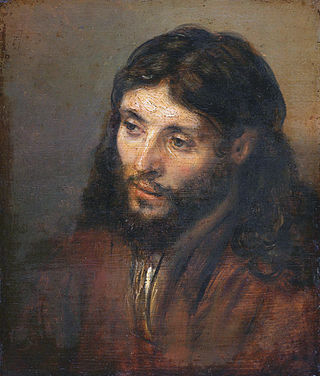
There are several passages in the Talmud which are believed by some scholars to be references to Jesus. The name used in the Talmud is "Yeshu",the Aramaic vocalization of the Hebrew name Yeshua.
The following outline is provided as an overview of and topical guide to Judaism:
Impurity of the land of the nations is a rabbinic edict stipulating a specified degree of tumah (impurity) on all lands outside the Land of Israel. The demarcation lines of foreign lands effectually included all those lands not settled by the people of Israel during their return from the Babylonian exile during the Second Temple period,and was meant to dissuade the priests of Aaron's lineage from venturing beyond the Land of Israel where graves were unmarked,and who may inadvertently contract corpse uncleanness and thereby eat their bread-offering (Terumah),unawares,in a state of ritual impurity and becoming liable thereby to kareth. The declaration with respect to foreign lands includes also the "virgin soil" of those lands,and was,therefore,a safeguard meant to prevent the priests from inadvertently transgressing the Law of Moses.
Ancient Hebrew writings are texts written in Biblical Hebrew using the Paleo-Hebrew alphabet before the destruction of the Second Temple in 70 CE.
Luigi Chiarini was an Italian abbot,orientalist and translator,born near Montepulciano (Italy),April 26,1789,died February 28,1832,in Warsaw (Poland),known for the first translation of the Talmud in French. His translation of the Talmud benefited from a grant from Tsar Nicholas I.
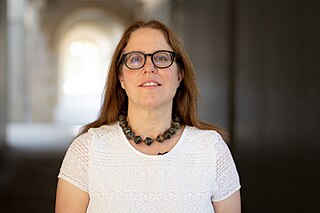
Rabbi Dalia Marx is Professor of Liturgy and Midrash at Hebrew Union College-JIR in Jerusalem. She received her rabbinic ordination at HUC-JIR in 2003 and earned her PhD at the Hebrew University in 2005.
